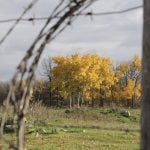
Animal Health

How to read a vaccine label
Knowing what is on a vaccine label helps ensure a high level of immunity in your cattle

Oil and cattle: When major industries collide
Vet Advice with Dr. Ron Clarke

Hemlock: A deadly poison affecting spring and summer pasture
Vet Advice with Dr. Ron Clarke

Keep an eye on water quality this summer
Low winter snowfall, low rainfall, heat and water use all heighten concern for dugout quality

Preventing and prepping for a foot-and-mouth outbreak
Canada has lined up funding for an improved vaccine bank in case of a foot-and-mouth outbreak. But does that mean we’re ready?

Managing parasite resistance to livestock dewormers
There’s no easy way to extinguish resistance to dewormers, but producers can manage it and control parasites

Tech for cattle disease diagnostics edges into the Star Trek age
Researchers are testing new, compact equipment to see if it can quickly and accurately diagnose specific pathogens that cause BRD in the field and feedlot

AUDIO: Preventing BRD on cow-calf operations

University delves into motivations behind preconditioning calves
"Different strategies, different management"

The link between toe tip necrosis in cattle and flooring
Flooring that provides traction without scraping hooves minimizes the risk of white line separation in cattle



